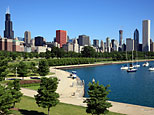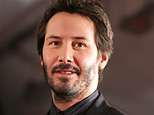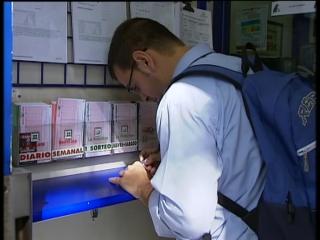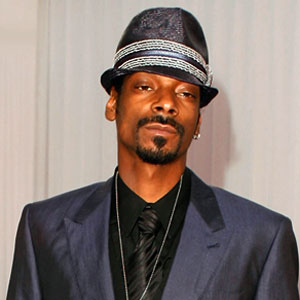NEW YORK – As far as Wall Street is concerned there is no bad news anymore.
At least for now, traders are seeing news about longtime trouble spots like banking and unemployment in a strictly positive light.
Surging bank stocks have lifted the Standard & Poor's 500 index a dizzying 37.4 percent since early March, when the benchmark for many mutual funds and other investments skidded to a 12-year low. The index is still down 40.6 percent from its high in October 2007.
"We trust the rally," said Chris Hyzy, chief investment officer at US Trust. He said the rapid climb since March 9 is justified because investors are no longer running from worries about a possible depression.
On paper, U.S. stocks have gained nearly $2.9 trillion in value since the rally started.
The latest fuel for the ascent came from news that job losses slowed in April and that big banks don't need as much capital as some investors had feared.
The Labor Department said employers cut 539,000 jobs last month — the fewest in six months and much fewer than analysts had expected.
Bank shares surged after the government released report cards on the nation's 19 largest financial institutions. With the "stress tests" results out and easing fears about the stability of banks, investors could check another item off their list of worries.
"Getting past the stress tests was a milestone," said Jim Dunigan, managing executive of investments for PNC Wealth Management. "That was a cloud hanging over our head for the past several months. The good news is there were no surprises."
The dissipating worries sent the Dow charging higher by 164.80 points, or 2 percent, to 8,574.65. The Standard & Poor's 500 index rose 21.84, or 2.4 percent, to 929.23, and the Nasdaq composite index rose 22.76, or 1.3 percent, to 1,739.00.
For the week, the Dow is up 4.4 percent, trimming its losses for 2009 to only 200 points, or 2.3 percent. It was the eighth gain for the index in nine weeks. The S&P 500 index jumped 5.9 percent, while the Nasdaq composite index rose 1.2 percent after logging bigger gains in recent weeks than other indicators.
Bank stocks drove Friday's advance. Investors were relieved that 10 of the 19 companies will need to raise about $75 billion in new capital as a buffer against losses if the economy worsens.
"If anything, the market is reading this more as a sign of approval than a bad sign for the weaker banks," saidJim Sinegal, equity analyst at Morningstar.
Citigroup Inc. rose 21 cents, or 5.5 percent, to $4.02, and Bank of America Corp. rose 66 cents, or 4.9 percent, to $14.17. Regional bank Fifth Third Bancorp soared $3.14, or 59 percent, to $8.49.
The KBW Bank Index, which tracks 24 of the nation's largest banks, jumped 12.1 percent.
Though analysts believe many challenges remain, the market has demonstrated an ability to maintain its gains, putting in its best two-month performance in nearly 35 years.
"Every economic report, every earnings release is going to continue to paint a picture of an economy that is on the mend and that is going to form the foundation for this rally, which I think is sustainable," said Jack Ablin, chief investment officer at Harris Private Bank.
Even the battered labor market has been showing signs of moderation. On Thursday, the government said new applications for unemployment benefits fell unexpectedly last week to the lowest level in 14 weeks.
But unemployment often continues to creep higher after recessions end so analysts focused on the drop in job losses in April. The government said Friday that the unemployment rate climbed to 8.9 percent in April — the highest level since 1983. And economists said government hiring of temporary workers for the 2010 census helped blunt the job losses.
"The news is never all good when you've hit bottom," said Alan Skrainka, chief market strategist at Edward Jones. "But that doesn't change our view that the rate of decline is slowing."
Many market watchers are encouraged.
Liz Ann Sonders, chief investment strategist for brokerage Charles Schwab & Co., said during the week that the recession might already have ended.
Even rising energy prices have been a good sign because traders are betting that an improving economy will require more resources.
Oil rose $1.92 to settle at $58.63 a barrel on the New York Mercantile Exchange on Friday and gasoline futures closed at their highest levels since November.
That helped energy stocks. Chevron Corp. gained $2.40, or 3.5 percent, to $70.38, while Exxon Mobil Corp. rose $1.87, or 2.7 percent, to $70.80.
In other trading, the Russell 2000 index of smaller companies rose 18.88, or 3.8 percent, to 511.82 and is now up 2.5 percent for the year.
About six stocks rose for every one that fell on the New York Stock Exchange, where volume came to 7.9 billion shares compared with 8.7 billion shares traded Thursday.
The dollar was mixed against other major currencies. Gold prices slipped.
Overseas, Britain's FTSE 100 gained 1.4 percent, Germany's DAX index rose 2.3 percent, and France's CAC-40 added 1.9 percent. Japan's Nikkei stock average rose 0.5 percent.
The Dow Jones industrial average closed the week up 362.24, or 4.4 percent, at 8,574.65. The Standard & Poor's 500 index rose 51.71, or 5.9 percent, to 929.23. The Nasdaq composite index rose 19.80, or 1.2 percent, to 1,739.00.
The Russell 2000 index, which tracks the performance of small company stocks, rose 12.37, or 2.5 percent, for the week to 511.82.
The Dow Jones U.S. Total Stock Market Index — which measures nearly all U.S.-based companies — ended at 9,509.08, up 510.35, or 5.7 percent, for the week. A year ago, the index was at 14,121.06.
 Mr Wijat's friend Magic Rabbit
Mr Wijat's friend Magic Rabbit 

.jpg)





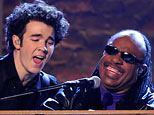





 Sat May 9, 10:49 AM ET
Sat May 9, 10:49 AM ET






